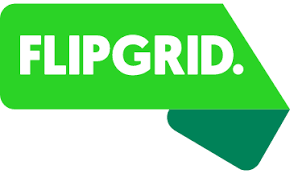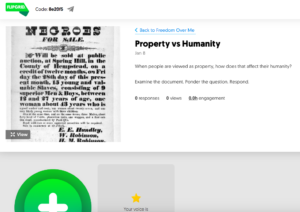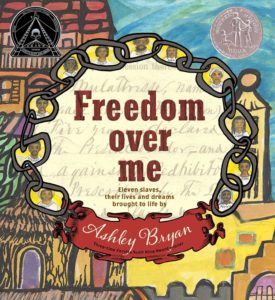** Contact us if you would like Literary Fusions to come to your campus with engaging, evidence-based, and practical professional development **
This was another Barnes and Noble display find. It caught my eye and the title intrigued me. Clearly, Freedom Over Me wasn’t my typical book. I am always drawn to quirky stories with peculiar characters, but the opposite is also true for me. I love a deep picture book that can carry so much meat and discussion into an elementary (or older) classroom. So I also gravitate to stories that can make complex information and difficult histories accessible to children.
Why I Finished It:
Wow! Just wow. I did finish it, but not in one sitting. This book is powerful, and yes, a little uncomfortable, but I believe we need to be pushed out of our comfort zone from time to time. Freedom Over Me illustrates the lives of eleven slaves. From reading the author’s note, I know that she found true documents written by slave owners and their slaves and then created fictitious situations based on truth for each slave. Freedom Over Me is SO POWERFUL! Each of the eleven slaves has two pages of information in the book. The first page is mostly about who they are in relation to their owner. In other words, what their responsibility was and the expectations their owners had of them. The second page is about their dream, what they hope to accomplish and their future plans. Even though you could read about each person separately, and I did, you could also read the story all the way through. I chose to read each person and stop. Not because it wasn’t moving or a powerfully told tale, but because of the deep nature of the story. I took breaks and spent time thinking about the lives of these people. I found myself wondering about people who are in similar circumstances in other countries. I wondered what it would be like for all of the people involved. I made connections as I thought about previous people and situations I had read about, from slavery in the United States, to the Holocaust in Germany, to child abductions and wondered if their dreams kept them alive as well.
Who I Would Give It To:
Middle-grade teachers NEED Freedom Over Me! We teach students about segregation and “separate but equal”, but this book provides a completely different perspective. The power in this book is that it humanizes the people who were dehumanized at the time. Ashley Bryan powerfully illustrates the lives of eleven beautiful souls who were dealt a terrible hand but held on to their dreams and future, which would carry them through this horrible time.
Integration Ideas:
Activate Schema (text-to-self, text-to-text and text-to-world connections) and Freewriting
Before reading or even introducing this book to the students, put this quote up:
“The future belongs to those who believe in the beauty of their dreams.” (Eleanor Roosevelt)
Ask students to discuss what they think this quote means. Once students have been given some time to discuss the meaning, ask them about their own dreams. Provide time for the students to write in their writer’s notebook about their dreams and aspirations.
Now spend some time discussing with the students what they know about slavery. There is no doubt that the students, somewhere in their educational history, have spent time talking about black history and Martin Luther King, Jr. Once students have shared their knowledge and everyone has had a chance to share what they know, show this quote:
“Emancipate yourselves from mental slavery, none but ourselves can free our minds!” (Marcus Garvey)
Yes, this quote is actually attributed to Marcus Garvey, even though, if you’re like me, you know it from Bob Marley’s Emancipation Song. Ask your students to discuss what they think this quote means. Allow time to define new words with the students. You could even play the Marley tune. Ask students to think about slavery, the slaves, and their dreams.
Social Studies
Take time for students to conduct informal research. This does not need to turn into a major research project, but students should look into the treatment of slaves, the history, expectations of slave owners and slaves, the road to emancipation, etc. You could provide specific topics or questions for students to look into, or let them go where their curiosities lead them.
- Websites (some with primary sources):
- Interview with author Ashley Bryan
- Library of Congress: Born in Slavery: Slave Narratives – a collection of more than 2,300 first-person accounts and photographs of former slaves collected as part of the Federal Writers’ Project in the 1930s.
- National Park Service: Aboard the Underground Railroad – historical information about the time period as well as geographical locations and stories about stops on the Underground Railroad.
- PBS – Africans in America – America’s journey through slavery. For each of the four eras, a teacher’s guide, images, documents, stories, and biographies are provided.
- African American Music:
- “Don’t Take Me Back to Slavery”
- “Slavery’s Passed Away”
- “Slave’s consolation”
- Maryland History Site – Information about how music sometimes contained secret codes to help slaves along the Underground Railroad.
- Library of Congress Document: Negros for Sale
- Library of Congress: From Slavery to Civil Rights – Timeline of primary sources and teacher’s guide.
- Additional Reading:
Technology Integration for Primary Sources
 Primary sources are most effective when students are encouraged to simply observe, study, and question. These primary sources listed above will undoubtedly prompt lots of questions and thoughts. Use FlipGrid to capture student thought and create a digital conversation around a primary source.
Primary sources are most effective when students are encouraged to simply observe, study, and question. These primary sources listed above will undoubtedly prompt lots of questions and thoughts. Use FlipGrid to capture student thought and create a digital conversation around a primary source.

With FlipGrid, students can add their own idea as a response to the reading or anything they’re learning around the topics in the book, or they can click on the primary source topic and respond to the prompt. Here’s an example: https://flipgrid.com/axva59.
Feel free to join our conversation by responding to the prompt! (Stay tuned for a more detailed “how-to” on FlipGrid coming soon!)
Writing
This book is begging for writing reflections. I personally, wouldn’t turn this into a formal writing assignment, although you easily could. I would want my students to reflect on their thinking. When I read this book, it was all I could do. I wanted to know more about each person. I immediately felt empathy for all people in similar situations, and I felt immense grief for the way people were/are treated. I needed to get my feelings out. I have no doubt students will need the same time and release. I wouldn’t try to structure it, just let it happen.
Poetry
This book is written in free verse poetry. It could easily be used as a mentor text in your poetry unit. The best and worst part about free verse poetry is that it is essentially poetry with no rules. Yep, it doesn’t have a rhyme scheme, a certain meter, or rhythm pattern. So your extremely creative, blank-slate kind of students will jump in and love it. Your more analytical, linear thinking type students will probably struggle. Either way, students should be exposed to free verse poetry.







Leave a Reply